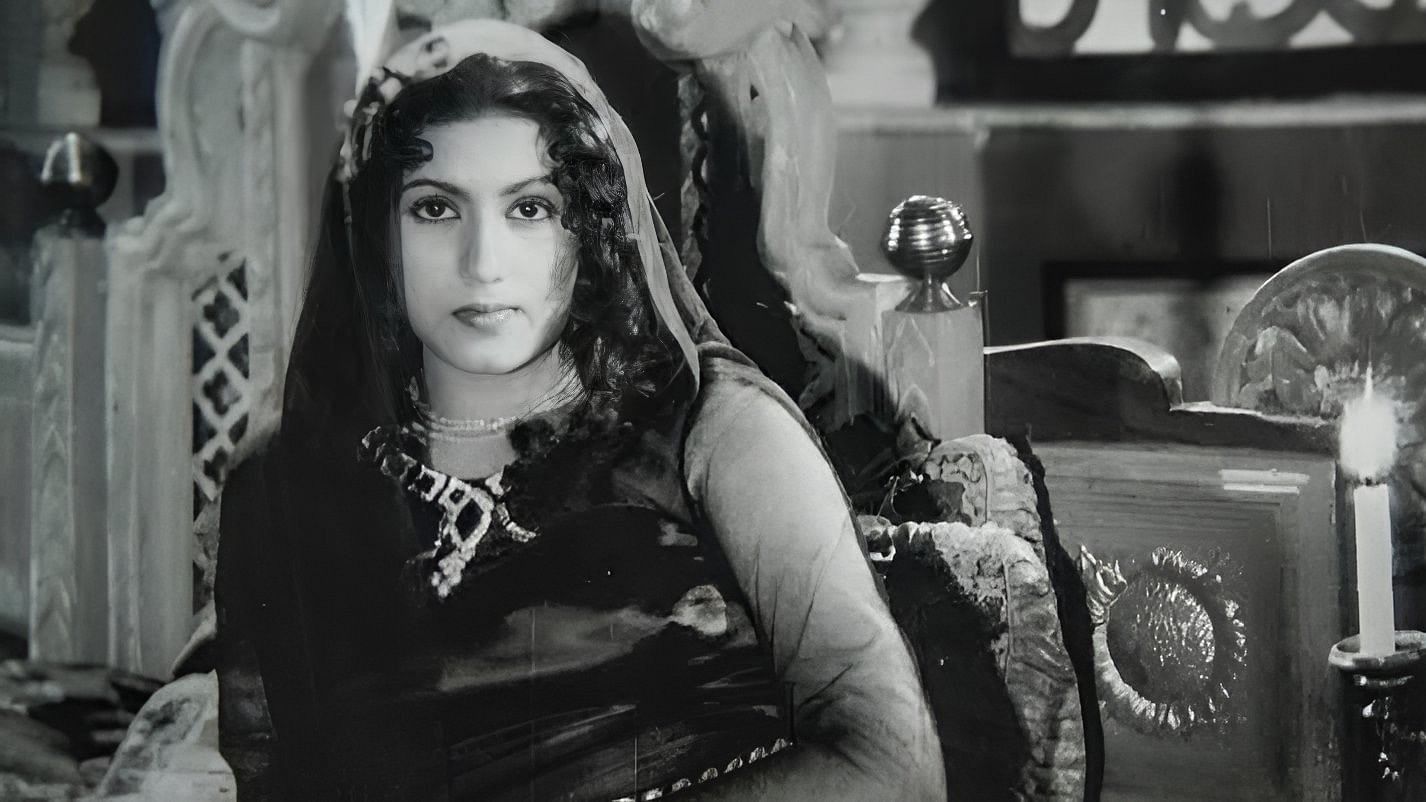
With flashbacks being an integral part of horror films, let’s rewind to the forties when Kamal Amrohi, after ‘Jailor’, ‘Pukar’, ‘Bharosa’ and ‘Shahjehan’, was one of the highest-paid writers. However, he wasn’t sure that he’d be able to sell this script when he approached Bombay Talkies. Studio boss Savak B Vacha was intrigued by the story of an aristocrat who stumbles upon a portrait of a man who looks exactly like him, learns he would come to the mahal to meet a beautiful girl and falls under her spell himself. However, he had second thoughts when the writer insisted on directing the film. Surprisingly, his production partner, Ashok Kumar, not only greenlit the film with Amrohi as director, but even played the bewitched Shankar opposite a relative newcomer, Madhubala, who was half his age.
His daughter Bharti revealed that the actor-producer had had an eerie experience in Khandala when the lady he had invited into his guest house when her car had broken down outside the gate, vanished into the night, leaving behind a corpse in the car. Both were gone the next morning, but the local inspector admitted a woman had slit a man’s throat and fled, only to be killed in an accident soon after. The incident happened 14 years ago.
‘Mahal’, released in 1949, was a runaway hit and to this day, Lata Mangeshkar’s ‘Aayega aanewala aayega’ continues to haunt our collective consciousness. The film however was more a psychological drama, with the daughter of a poor gardener weaving a web of deceit, but perpetuated the myth of the haunted house which grew to ominous proportions with Chinese spirits, black magic, human sacrifice and a solar eclipse in the 2017 Tamil film ‘Aval’, shot simultaneously in Hindi as ‘The House Next Door’, and dubbed in Telugu as ‘Gruham’. Two years later, in the Kannada film ‘Bhinna’, an actress finds eerie parallels between her life and the script when she locks herself up in a vacation house to prepare for a role. Last Friday, ‘Bloody Ishq’, directed by Vikram Bhatt who has successfully flagged off the ‘Raaz’, ‘1920’ and the ‘Haunted’ franchise, started streaming. It revolves around a house on a lonely island with a resident ghost and secrets galore.
Bimal Roy produced and directed the 1958 paranormal romance ‘Madhumati’, in which Vyjaynthimala’s ghost appears to make the man responsible for her death confess to his crime when her lookalike’s car breaks down en route to the palace, almost ruining the plan set in motion by Dilip Kumar’s Anand, the man she had loved. Once the raja is arrested, both Madhumati and Anand jump off the terrace. They are reincarnated and reunited in another birth. In 2007, Farah Khan re-imagined ‘Madhumati’ with Deepika Padukone, Shah Rukh Khan and Arjun Rampal; ‘Om Shanti Om’ was a blockbuster.
Eight years later, Dhanush and Amyra Dastur took the theme of reincarnation further in ‘Anegan’, playing star-crossed lovers who die and are reborn four times in different time periods before they can marry. Dubbed in Hindi, Bengali and Malayalam, its muse was an earlier Tamil film, ‘Nenjam Marappathillai’, which flopped in 1963, but has subsequently attained cult status.
In the ’60s, Biswajit earned the tag of ‘Suspense Hero from Bengal’ with ‘Bees Saal Baad’, ‘Kohraa’, ‘Bin Badal Barsaat’ and ‘Yeh Raat Phir Na’. While there was no ghost in his 1962 debut film, in Mithun Chakraborty’s 1989 ’Bees Saal Baad’, his wife from another birth, Dimple Kapadia’s Nisha, tussles with his wife in the present, Meenakshi Seshadri’s Kiran, for his possession while also wanting to settle a score with his father-in-law who killed Suraj and drove her to suicide.
Dimple’s woman in white brings back memories of Sadhana in the 1964 film, ‘Woh Kaun Thi’. When Manoj Kumar’s Dr Anand offers her a lift one rainy night, she guides him to a cemetery whose gates open automatically and Lata Mangeshkar’s ‘Naina barse rimjhim rimjhim’ beckons him. Would you believe, one rainy night 20 years later, Shyam Ramsay actually picked up a woman when driving back to Mumbai from Mahabaleshwar. Her eyes were lifeless, her voice gravelly and her feet turned inwards. If this sounds familiar, it’s because it inspired ‘Veerana’, directed by Shyam and Tulsi Ramsay.
The Ramsay Brothers, a pseudonym of FU Ramsay’s seven sons and grandsons, churned out more than 30 horror films in the ’70s and ’80s, along with the country’s first horror series, Zee Horror Show. Their witches, werewolves and vampires, locked rooms, rattling bones and demonic screams, crucifix clutching priests and tantriks breathing fire still populate our cinema. What has changed is that from Ramsay’s B-grade offerings catering to the lowest common denominator in single screen theatres, the genre has entered the multiplexes. Sandalwood’s ‘Kantara’ and Bollywood’s ‘Shaitaan’ were as much a hit with the classes as the masses.
In terms of content too, we have seen a ‘U-Turn’. The 2016 Kannada supernatural thriller climaxing in one last suicide, this one aborted by the ghost, being remade seven times. The 2022 Malayalam film ‘Kumari’ also has a novel plot, combining Indian mythology with the classic Lovecraftian mysteries as a mother tries to save her unborn child from an otherworldly entity.
What’s more like the multiverse, spyverse and copverse, we now have a horrorverse. Already populated with a spooky ‘Stree’, a man-eating ‘Bhediya’, the conjoined ‘Roohi’ and the malevolent ‘Munjya’, it is getting ready to welcome another ‘Stree’ this Independence Day.